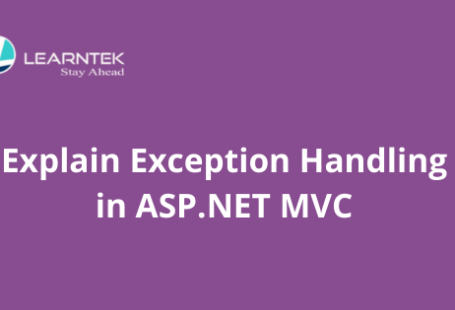SharePoint, industry-leading document management and collaboration tool by Microsoft basically is a content management system and intranet, used for internal purposes to help bring business together. The platform is comprised of multi-purpose technologies, which are integrated with Office 365, and handy document management capabilities as well.
Deemed by many organizations as the most popular document management and collaboration system in the world, it’s being used by more than 190 million people worldwide. Thus, there is a great abundance of SharePoint development services available. The platform furthermore is enormously adaptable, and how is it used exactly varies from one organization to another.
The Relevance of Microsoft SharePoint
The core functions of SharePoint are: storing documents in a more effective format, and bringing together an organization so everyone gets critical information that’s important to them. The following are some of the relevance and benefits you could get from using SharePoint.
- Documents and folders context
Usually, a traditional document storage facility is a folder on a server. Why SharePoint is more effective compared to traditional methods is that it brings context around the folder itself through keeping track of document versions. When using SharePoint, there’s more information about the file, not just some file sitting in a folder. But it’s an evolving piece of information with a history and context.
- Storing all information in a central location
This could vary from things like CEO updates to important events or meetings. The platform brings all the information in one place so the staff could find the information they need fast. With SharePoint, you could simply post a message and everyone gets to access it from the central location.
- Constant staff communication
In the past, you send up a group email and copy everybody. However, much information gets informed or even gets lost. SP however brings collaboration to the table, thus all the staff could see any important information and communication.
- Boosts collaboration
The platform really is designed around getting a company into a central point where they could coordinate and collaborate. This is important especially for organizations that are not connected geographically.
SharePoint provides the staff with the ability to connect with one another via a portal in branches that work in a very isolated format. Collaboration promotes innovation and creates a company culture that brings about creative ideas.
The SharePoint Offerings
A SharePoint development company today continues to offer development services that meet the different requirements of the clientele. Business organizations continue to seek the services of a SharePoint developer to craft solutions that best meet their requirements.
Why is SharePoint still popular? What does it have to offer? Organizations use the platform to build websites. It could be used as a secure place for storing, organizing, sharing, and accessing information from any device. The following are some of the features and offerings of the platform.
- Content management features, which help organize and manage content with lists, metadata, libraries, retention policies, and records mana
- Team sites that give a place for predetermined groups of users to see and coordinate on data, news, and content.
- External files and content sharing with people within and beyond your organization
- Mobile apps that allow users access to intranets, team websites, and content on Windows devices, iOS, and Android.
- Automating business processes through building workflows and alerts.
- Communication websites for sharing and communicating messages cross organizations with dynamic, customizable sub-sites.
- Search functionalities that help surface important people as well as relevant content.
SharePoint Online and SharePoint Server, what’s the Difference?
SharePoint Server is available on-premises, while SharePoint Online is a cloud-based multitenant that’s bundled typically with Microsoft Office 365 subscriptions. While the two use common codebases, they vary in functionality and program.
SharePoint Server, being locally-hosted is owned and operated by an organization. It is the responsibility of users to run and maintain internally everything, which includes active directory, server architecture, and file storage.
SharePoint Online is a cloud-based service, thus is hosted by Microsoft that users just access ‘as a service’, instead of having all the architecture on their own premises. All the ‘back end’ SharePoint parts are looked after by Microsoft. Users need not worry about the architecture, servers, or resources because all of them are handled by the vendor.
This means that users benefit from the security features of the vendor as well, which tend to be usually more robust compared to what users could implement in-house.
Three Keys to a Successful SharePoint Implementation
Implementing SharePoint is the easiest step. It’s the work that has to be done before implementation that will determine if it’s successful or otherwise. Determining what you need and assessing the requirements of the company is what makes or breaks the implementation.
To start with, consider working with a SharePoint consultant or someone with the capability to perform business analysis with you. Afterward, put a sitemap together, put together how it would work, and leverage the best practice experience. Consider asking the consultant that other organizations are doing.
Once SharePoint has been implemented, you should provide your staff with training to continuously manage it. The following are three keys to a successful implementation of SharePoint.
Carrying out business analysis and requirements assessment
When it comes to implementing SharePoint, the first thing that you should do is to perform business analysis and make an assessment of your requirements. Implementing the platform is easy, but the real critical steps include an understanding of what you need from it, what it could do for your brand, and what it could not do.
Check out the existing shared documents drive and break it down. Determine what you and what you don’t need. Often, there’s plenty of crap there.
Consider what you want from a collaboration viewpoint. All the various elements could be built-in SharePoint, but you should find out which are the most appropriate. This is where the SharePoint consultant could help through leveraging some of his/her experience.
Determine the right Service Model for You
SharePoint has three various flavors. The first is the free version where you could actually get a free version if you run Windows Server. However, there are some limitations to the free version, thus make sure to consult an IT person.
The second is to leverage Office 365, which is the cloud SharePoint solution of Microsoft. The service model provides you quite a lot of storage of up to 100GB per allocation.
The third option is to get the solution hosted with a third-party service provider, such as the R&G Technologies for instance. All in all, the Office 365 SharePoint version is the most affordable option.
Train Staff on SharePoint Usage
The SharePoint platform is designed to enable basic non-IT individuals to administer, change, and update it, with the right level of training. All of it is based on what they call the point and click. There are available training courses for SharePoint.
They could be accessed through the support website of Microsoft. The video tutorials could also be downloaded or the links could be shared around the office. The same with any technology, expect a learning curve for the staff.
Training them on SharePoint best practices and how to use it would help the transition.
Conclusion
Microsoft has updated and plans to continue updating the SharePoint platform to meet the changing needs and requirements of organizations. The next on-premises iteration currently is in public review.
SharePoint 2019 has been updated to reflect the modern look of SharePoint Online better and would come with a host of new features.
Writer note:
Aisha Shane is a Technology Analyst at Tatvasoft Australia – A leading Sharepoint development services in Australia, She has been working alongside SharePoint consultants and years in a Technological domain. Her research through various fields focuses extensively on digital interaction narratives.






